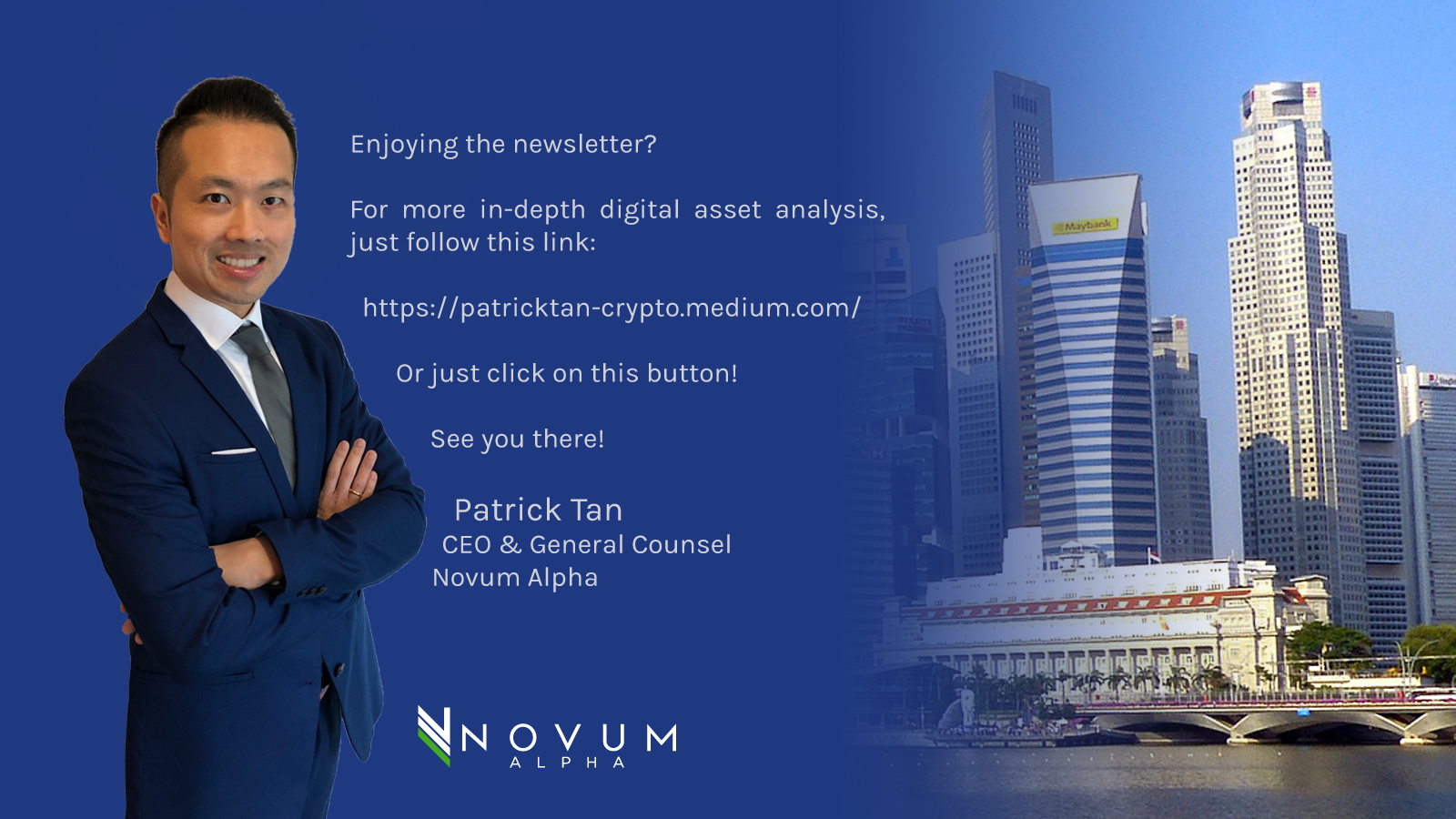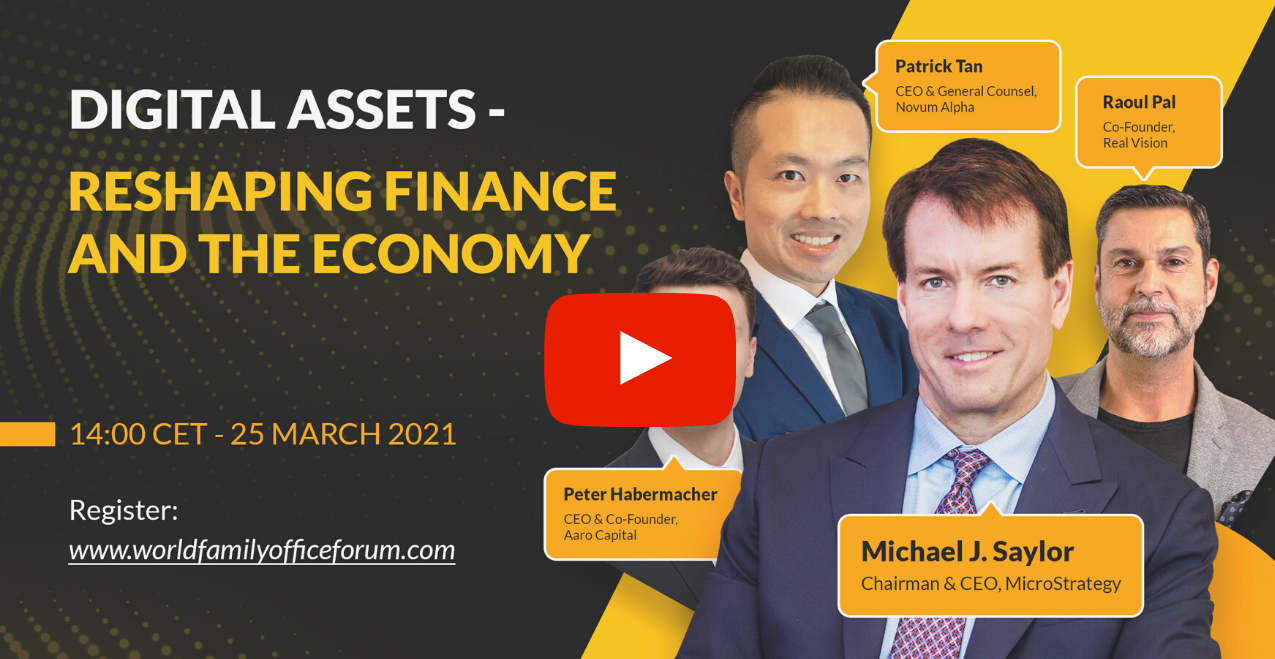Novum Alpha - Daily Analysis 1 April 2021 (10-Minute Read)
Asian stocks and U.S. equity futures rose Thursday as the global recovery and President Joe Biden’s infrastructure plan helped traders look past lockdowns from resurgent Covid-19 cases.
|
A wonderful first day of April to you.
In brief (TL:DR)
|
 |
 |
 |
In today's issue...
|
Market OverviewIn Asia, shares were mostly up with Tokyo's Nikkei 225 (+1.25%), Sydney’s ASX 200 (+0.42%), Seoul's Kospi Index (+0.70%) and Hong Kong's Hang Seng Index (+0.85%) all up on renewed confidence.
|
 |
 |
|
1. High Stakes Bets Built & Busted a Billionaire's Quiet Fortune
If you walked past Sung Kook Hwang in midtown Manhattan, you’d scarcely be able to tell that he was a billionaire.
Better known as “Bill” Hwang, the former protégé of hedge fund legend Julian Robertson, Hwang had amassed an estimated US$10 billion fortune but led a relatively modest and low-key lifestyle.
A staunch Christian, Hwang led the sort of quiet lifestyle that suggested he was a highly paid professional, like a doctor or a lawyer, than a hedge fund billionaire.
But now it appears that his relatively frugal lifestyle choices may have set him in good stead for the next chapter of his life.
Even on Wall Street, few ever noticed Hwang, let alone knew his name, until last Friday.
Quietly amassing one of the world’s greatest fortunes, Hwang and his private investment firm Archegos Capital Management are now at the center of what will go down as one of the biggest margin calls of all time.
A multi-billion dollar fiasco that has shone a spotlight on the secretive market bets with dangerous levels of leverage that authorities are now scrutinizing more carefully.
Last Friday, banks and prime brokerages raced for the exits to unwind an billions of dollars’ worth of leveraged bets on a cluster of companies, including ViacomCBS, Discovery Communications, GSX Techedu and Baidu – firms which had all otherwise soared this year.
It’s believed that one part of Hwang’s portfolio, which has been traded in blocks since last Friday by Goldman Sachs, Morgan Stanley and Wells Fargo was worth almost US$40 billion last week, before the purge.
As Hwang’s trades continue to be unwound, estimates of the total size of those trades are skyrocketing, with some suggesting that they may have had a notional value of some US$100 billion.
And as those trades are unwound, much of Hwang’s net worth, which was estimated at being upwards of US$10 billion, is being unwound with it.
That cavalcade of margin calls has raised serious questions from regulators the world over, from New York to Zurich, Tokyo to Singapore – how could someone take such big risks, facilitated by so many banks, and not draw any regulatory scrutiny at all?
One part of the answer is that Hwang set up his firm as a family office, with limited oversight because of the lack of outside investors (thanks to an indictment in 2012 for insider trading) and then deployed financial derivatives to amass massive stakes in companies without ever having to disclose them.
The other reason of course is that banks globally embraced Hwang as a “whale” a lucrative customer who they could bilk for fees for providing that leverage.
Indicted for market manipulation and insider trading, Hwang hasn’t been able to trade outside money for almost a decade – instead family offices that exclusively manage one fortune are generally exempt from registering as investment advisers even.
That means they don’t have to disclose the family office’s owners, executives, or even how much is managed.
But when family offices grow to sizes that dwarf even some of the largest hedge funds – questions will no doubt arise in the wake of last Friday’s episode as to whether or not they need to be scrutinized more closely by the SEC.
Some of the firms, particularly ViacomCBS, have rebounded from Friday’s falls, but are still down from before the block trade selloff, following a fresh analyst downgrade.
Why the banks suddenly pulled the rug on Hwang and his Archegos Capital Management is however less clear, but every day brings fresh updates like a brand new episode of Showtime’s Billions.
|
 |
 |
|
2. Bond Traders Battered After Biggest Loss in Three Decades
“The name is bond, Treasury bond.”
For the uninitiated, a U.S. Treasury is a low-risk investment, backed on the full faith and credit of the U.S. government.
Buying a Treasury, an investor lends money to the U.S. government, which in turn makes interest payments to bondholders as compensation for the loan provided – the “yield.”
Treasuries are issued with a face value and a fixed interest rate, sold at an initial auction or in the secondary market to the highest bidder.
When there is a lot of demand for Treasuries, their prices are bid up past its face value and they trade at a premium, lowering the yield that the investor will receive since the government only pays the face value on the Treasury when it matures.
For instance, if an investor buys a bond for US$10,100, they will only be repaid the face value of US$10,000 when it matures.
Conversely, if demand for Treasuries is low (which it is now) the yield on that Treasury increase because investors are only willing to pay an amount below a Treasury’s face value – the yield increases for the investor since they can purchase the bond at a discount and be repaid the full face value at maturity.
And the prospect for a sharp economic recovery as well as more Americans getting coronavirus vaccinations is heading Treasuries to their worst quarter since 1980, when then-U.S. Federal Reserve Chairman Paul Volcker was trying to break inflation by raising interest rates.
As the U.S. economy reopens Treasury holders are bracing for even higher yields and more losses to come.
Part of the reason of course is political – Treasuries took a beating when the Democrats took the Senate in January and again when the Biden administration managed to roll out its US$1.9 trillion fiscal stimulus plan.
The Fed has so far folded its hands to pushback against higher Treasury yields.
But it’s hard to see how much longer the Fed can continue to sit back and do nothing, because the government’s borrowing costs influence the interest rates that individuals and businesses pay to borrow money to buy everything from real estate to factory equipment.
And buoyed by its success in pushing through the first massive fiscal stimulus package, the Biden administration is seeking another multi-trillion dollar spending plan, which can only add to Treasury yield volatility.
Some are suggesting that the pace of Treasury losses should be contained, even though volatility looms.
For starters, there is the distinct possibility that despite more Americans being vaccinated, virulent new coronavirus strains and an abandonment of pandemic precautions, could reignite a dreaded fresh wave of infections in the U.S.
And for now, investors have already priced in the disorderly selloff in Treasuries that surprised market participants last month.
Risks remain – the U.S. economy may not grow as quickly as advertised and a fresh wave of infections could force authorities to renew lockdowns, putting a cap on Treasury yields – right now there’s a big gap between expectations and reality, with different visions of what’s possible.
|
 |
 |
 |
|
3. NFT? What's That?
A cryptocurrency minute often feels like a lot less than that. Before you can say “rug pull” the floor beneath a new development in the cryptocurrency space may already have come out from under you.
Last summer it was decentralized finance, which continues to brew, this spring it looks like it’s NFTs or non-fungible tokens.
But after a mad month of sales, volumes have all but collapsed, from an estimated US$19.3 million a day to just over US$3 million.
And while some are saying that the digital art market had nowhere to go but down, there are those who also see that the decline in the initial euphoria is warranted so that the longer term development work can continue.
To be sure, general interest in the NFT market has fallen just as the hammer fell on Beeple’s US$69.3 sale of digital art at Christie’s, leaving those who remain invested in the market wondering if the pause is momentary or if they’re not holding on to worthless tokens, non-fungibility notwithstanding.
But like every other bubble and bust in the cryptocurrency sphere, short-term speculators who had been hoping to make a quick buck from the NFT craze are now wondering if they’re holding the can after everyone else has left the party.
And fractionalized digital art tokens that allow investors to “own” a portion of digital artworks have collapsed in value.
Yet the fundamentals behind some of the developments in the NFT space are not all hype.
The struggle among artists is well documented and NFTs have unlocked the potential for them to now gain a fairer share of the value of their works.
Fractionalization has also made art more accessible to more people than ever before, even if that art is digital.
More importantly, greater awareness about the value of NFTs to not just promote the development of digital art, but a wide variety of works including prose, poetry and music, that could shake up the creative field for decades to come.
NFTs have allowed artists to not only gain from selling their works to a wider audience, but also to take a small share for every transaction that takes place thereafter.
And while it’s easy to dismiss NFTs as just another cryptocurrency-fueled bubble, it may really just be going through a phase of price discovery, with novelty something very hard to appraise.
|
What can Digital Assets do for you?While markets are expected to continue to be volatile, Novum Alpha's quantitative digital asset trading strategies have done well and proved resilient.
Using our proprietary deep learning and machine learning tools that actively filter out signal noise, our market agnostic approach provides one of the most sensible ways to participate in the nascent digital asset sector.
If this is something of interest to you, or if you'd like to know how digital assets can fundamentally improve your portfolio, please feel free to reach out to me by clicking here.
|
 |
|
Looking to trade cryptocurrency yourself? Then why not try CryptoHero, a member of the Novum Group.
Enjoy some of the high performing algorithms that Novum Alpha uses, absolutely free!
Because you can't be up 24 hours trading cryptocurrency markets, CryptoHero's free bots do the trading for you.
Simple and intuitive for crypto beginners to set up and run, CryptoHero is currently available on the Web and iOS with an Android version ready in 2021.
Try our one click copy bot settings with the button below and enjoy 1-month Premium Subscription absolutely free!
|
|
Apr 01, 2021